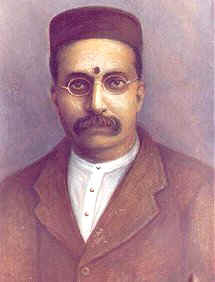 SABURI
SABURI
 SABURI
SABURI
Jai Hari Bol Jai Seetha Ram Gopi Gopaala Bhajo Radhe Shyaam Harey Ram Ram Ram Ghanashyaam Shyaam Shyaam Shree Raghu Nandana Shree Rama, Daasarathe Jaya Raghu Rama Nanda Kishora Navaneetha Chora Brindavana Govinda Lala Harey Ram Ram Ram Ghanashyaam Shyaam Shyaam(Glory to Seetha Ram! Sing the glory of the blue-complexioned Lord of the cows and cow-maids Glory to Rama, Son of Dasharatha and Successor of Raghu; Glory to the Nanda's young Son, Brindavan's Darling, the Stealer of butter (souls), beloved Govinda )

|
SHRI SAI SATHCHARITHA
|

|
sadubhaiyanaik |
Chapter XX |
chotubhaiyaparalkar |
Ishavasya Upanishad
Das Ganu once started to write a Marathi commentary ont he Ishavasya Upanishad. Let us first give a brief idea of this Upanishad, before proceeding further. It is called a `Mantropanishad', as it is embodied in the Mantras of the Vedic Samhita. It constitutes the last or the 40th Chapter of the Vajasaneyi Samhita (Yajurveda) and it is, therefore, called Vajasaneyi Samhitopanishad. Being embodied in Vedic Samhitas, this is regarded as superior to all other Upanishads, which occur in the Brahmanas and Aranyakas (explanatory treatises on Martras and rituals). Not only this, other Upanishads are considered to be commentaries on the truths mentioned briefly in the Ishavasya Upanishad. For instance, the biggest of the Upanishads, viz, the Brihadaranyaka Upanishad, is considered by Pandit Satwalekar to be a running commentary on the Ishavasya Upanishad.
Profesor R.D. Ranade says:- "The Ishopanishad is quite a small Upanishad; and yet it contains many hints which show an extraordinarily piercing insight. Within the short compass of 18 verses, it gives a valuable mystical description of the Atman, a description of the ideal sage, who stands unruffled in the minds of temptations and sorrows; and adumbration of the doctrine of Karma-Yoga as later formulated, and finally a reconciliation of the claims of knowledge and works. The most valuable ideas, that lies at the root of the Upanishad, is that of a logical synthesis between the two opposites of knowledge; and work, which are both required according to the Upanishad to be annulled in a higher synthesis". (page 24 of the Constructive Survey of the Upanishad Philosophy). In another place he says that "The poetry of the Ishopanishad is a Commixture of moral, mystical and metaphysical (ibid, Page 41)".
From the brief description given above about this Upanishad, any one can see how difficult it is to translate this Upanishad in a vernacular language, and brief out its exact meaning. Das Ganu translated it in Marathi 'Ovi'metre, verse by verse, but as he did not comprehend the gist or essence of the Upanishad, he was not satisfied with his performance. He therefore consulted some learned men regarding his doubts and difficulties and discussed with them at great length. They did not solve them nor did they give him any rational and satisfactory explanation. So Das Ganu was a little restless over this matter.
Devotees Experiences
Shirdi.
I forgot to mention yesterday & the day before that
Upausani Vaidya that used to be at Amravati is here & saw me soon after my
arrival. We sat talking. He told me briefly his story since leaving Amravati,
how he went to Gwalior state, how he purchased a village, how it became
nonpaying, how he met a Mahatma, how he got ill, how he tried all remedies,
applied to various Sadhus & Mahatmas, how finally Sayin Maharaj took him in
hand, how he improved & is now under orders to stay here. He has composed a
stotra of Sayin Maharaj in Sanskrit. We all got up early and attended the
Kakad-Arti. It is very edifying. I prayed, bathed & saw Sayin Maharaj go
out, then again after he returned & once more in the afternoon. Sayin
Maharaj looking at me said "Ka Sarkar". Then he gave the general advise that I
should live as God keeps me, & added that a man fond of his family has to
bear many things & so on & told the story of a rich man who slaved till
evening, cooked for himself and ate a very rough bread, all on account of a
temporary difficulty. We saw Sayin Maharaj again the evening & then sat in
the verandah of the house built by Dixit. Two gentlemen from Bombay brought a
Satar & playing on it said Bhajan. Mr Thosar whom I call Hazarat also sang
very beautifully and Bhishma had his usual Bhajan. Time passed very pleasantly
till midnight. Thosar is a very pleasant companion. I had a long talk with my
son Balvant the Bombay men & others about contemplation &c &c.
Madhavarao Deshpande was here & fell asleep. I saw with my own eyes, &
heard with my own ears what I only read about but never experienced that with
every outgoing & in drawing breath of Madhavarao Deshpande comes the clear
sound of "Sayin Nath Maharaj Sayin Nath Baba" This sound is as clear as clear
can be & when Madhavrao snores, the words can be heard even at a distance.
This is really wonderful & he is in deep sleep all the time.